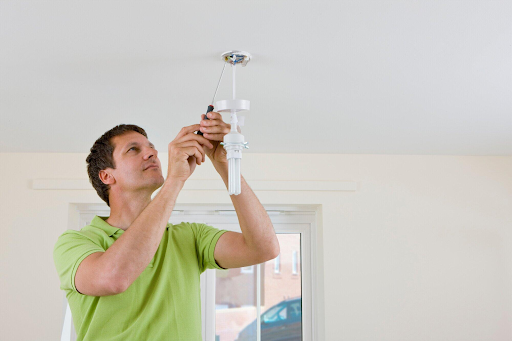3 minute read
Flickering lights at home? Sure, it might seem like a minor nuisance, but those flickers could be hinting at bigger electrical issues that need your immediate attention.
In this article, we’ll dive into the common causes of flickering lights and guide you on the steps to tackle them head-on. Don’t ignore the signs- let’s get to the bottom of it together!
Types of Flickering Lights
Flickering lights can manifest in different ways, and understanding the type of flicker can help identify the underlying electrical issue.
Occasional Flickers
Occasional flickers are the most common type of flickering lights. They are typically caused by temporary power fluctuations. These can be triggered by weather conditions, nearby construction, or large appliances turning on and off.
Constant Flickers
Constant flickers are more of a concern and could point to an underlying electrical problem. These flickers occur frequently and can be a sign of loose wiring, overloaded circuits, or faulty light fixtures.
Dimming Flickers
Dimming flickers are usually accompanied by a decrease in the brightness of the lights. This type of flicker is often caused by voltage fluctuations or inadequate power supply to the affected area.
Common Causes of Flickering Lights
Now that we’ve identified the types of flickering lights, let’s dive into the common causes behind them.
Faulty Light Bulbs
The simplest reason for flickering lights could be a faulty light bulb. If you notice constant or occasional flickers in a single light fixture, try replacing the bulb before jumping to more complex solutions.
Overloaded Circuits
Flickering lights can indicate overloaded circuits. When electrical demand exceeds circuit capacity, it causes power fluctuations, resulting in flickering lights.
Loose Wiring
Loose wiring is another common culprit behind flickering lights. As wires become loose over time, they can cause interruptions in the flow of electricity, leading to flickers.
Old or Faulty Electrical Panel
An outdated or faulty electrical panel can also cause flickering lights. As the panel ages, it may struggle to keep up with the electrical demands of your home, resulting in flickering and other electrical issues.
Steps to Fix Flickering Lights
Now that we’ve identified some common causes of flickering lights, here are some steps to help you fix the issue:
Hire a Professional Electrician
If you’re not comfortable dealing with electrical issues on your own, it’s best to hire a professional electrical company from your local area, such as LINC Electrician Philadelphia. They have the knowledge and expertise to identify the underlying cause of flickering lights and make necessary repairs.
Check for Loose Connections
If you feel confident in your abilities, you can check for loose connections yourself. Start by turning off the power to the affected area and carefully inspecting all connections, tightening any loose ones you find.
Upgrade Your Electrical Panel
If your flickering lights are caused by an outdated or faulty electrical panel, it might be time for an upgrade. Consult with a professional electrician to determine the best course of action for your home.
Reduce Electrical Demand
In cases where overloaded circuits are causing flickering lights, try reducing the electrical demand by unplugging unnecessary appliances or spreading them out across different circuits.
Explore the Causes and Solutions for Flickering Lights with this Guide
Flickering lights may seem like a minor issue, but they could be indicative of more significant electrical problems in your home. With this guide, you can take the necessary steps to fix the issue and ensure the safety of your home. Remember, when in doubt, always consult a professional electrician for proper diagnosis and repair.
Is this article helpful? Keep reading our blog for more.





